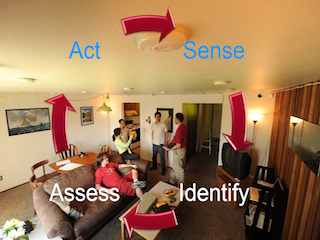 |
The CASAS smart home project researches machine learning and pervasive
computing technologies that provide context-aware, automated support in
everyday environments. In a smart home, computer software that plays the role
of an intelligent agent perceives the state of the physical environment and
residents using sensors, reasons about this state using artificial intelligence
techniques, and then takes actions to achieve specified goals. During
perception, sensors embedded in the home generate readings while residents
perform their daily routines. The sensor readings are collected by a computer
network and stored in a database that an intelligent agent uses to generate
useful knowledge such as patterns, predictions, and trends. On the basis of
this information, a smart home can select and automate actions that meet the
goals of the smart home application. In this way, a smart home can improve the
comfort, safety, and productivity of the residents.
More...
|
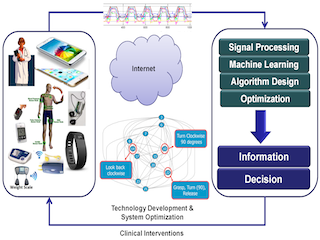 |
In merging innovations in medicine and technology, we take a comprehensive
research strategy and actively collaborate with experts in medicine, nursing,
pharmacy, public health, and health sciences. We develop advanced sensing,
computing, and mobile technologies for real-time patient diagnostics, guidance,
and health and wellness promotion. In clinical trials, these systems have
delivered proven results for people with diabetes, vision impairment, heart
failure, cardiovascular disease, liver disease, cancer, and other conditions.
More...
|
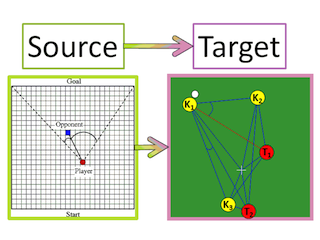 |
A key challenge for smart environments is deciding how to act. Dr.
Matt Taylor's research focuses on learning what actions to take, and
when, autonomous exploration, human guidance, and data from
multiple existing sources. Using such machine learning techniques,
both virtual agents (e.g., programs) and physical agents (e.g.,
robots) can learn to act to perform useful functions on
their own, by collaborating with other agents, and/or collaborating
with humans in the same environment. More...
|
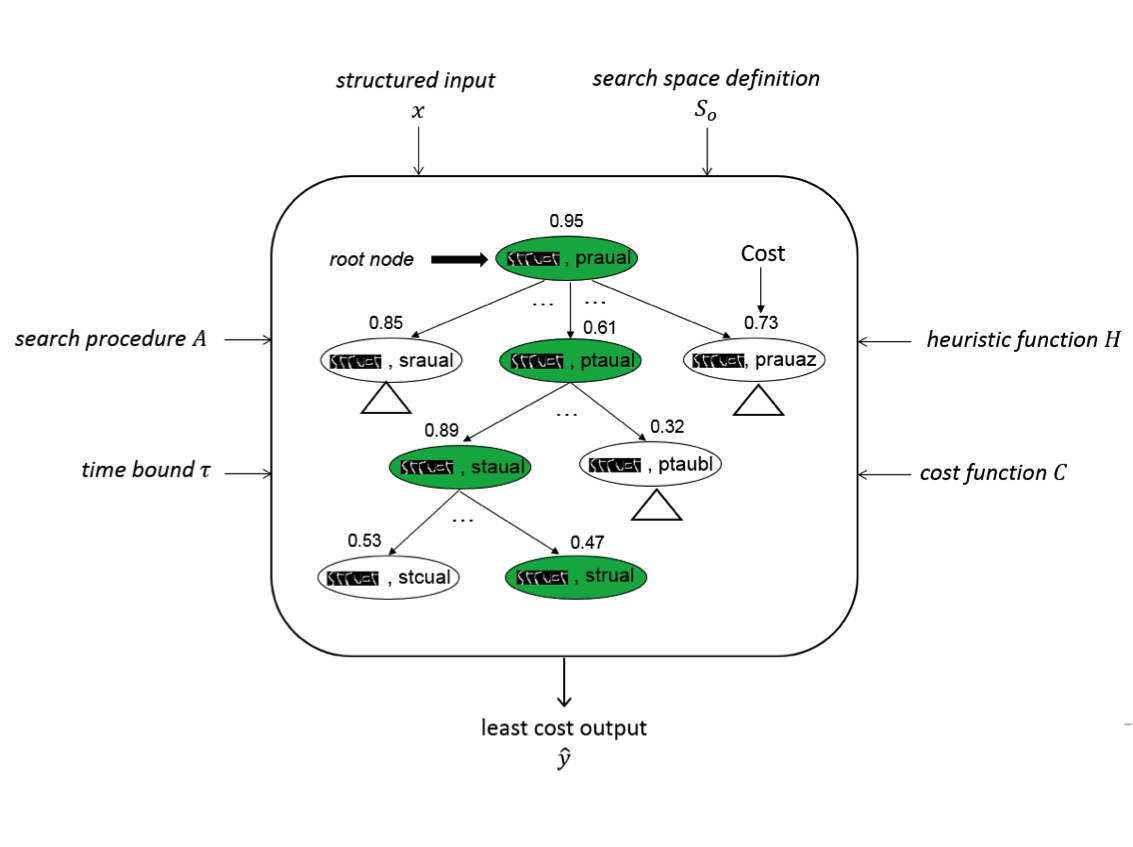 |
A smart environment can be viewed as a data-driven decision-making
architecture, where we have a closed loop with the following
components: 1) Data collection, 2) Learning models, 3) Optimization
of decision-making function, and 4) Executing decisions. Dr. Jana
Doppa's research focuses on learning models from large-scale data,
learning to make time-bounded decisions (or predictions) from those
models to optimize some objective (e.g., energy efficiency or
productivity of residents), and learning from implicit and explicit
feedback from the users. His other interests include machine
learning for sustainability and health-care applications.
More...
|
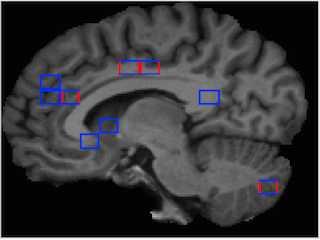 |
Machine learning methods can be applied to MRI scans of the brain
in order to classify patients according to particular
characteristics, such as Alzheimer's Disease, advanced age, or a
high level of education. This work presents the Graph Neural
Analyzer, which can discover structural correlations with a
variety of potential classifications including age, level of
education, gender, socioeconomic status, ethnicity, and
Alzheimer's Disease. More...
|
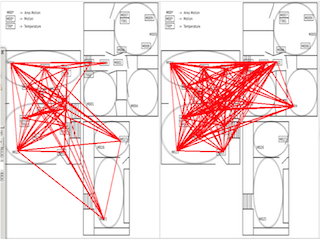 |
Representing movement within a smart environment as a
transition graph can improve activity recognition.
Frequent subgraphs in the transition graph are added
to more traditional machine learning features and recognition is
evaluated using an ensemble of learning algorithms with
and without the graph-based features. The ensemble
significantly outperforms the individual approaches.
More...
|





